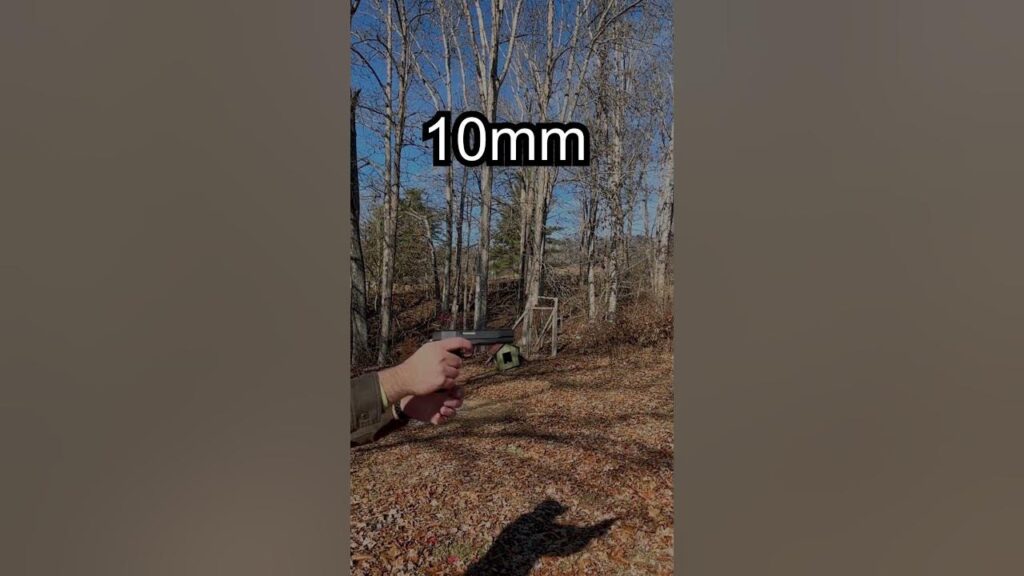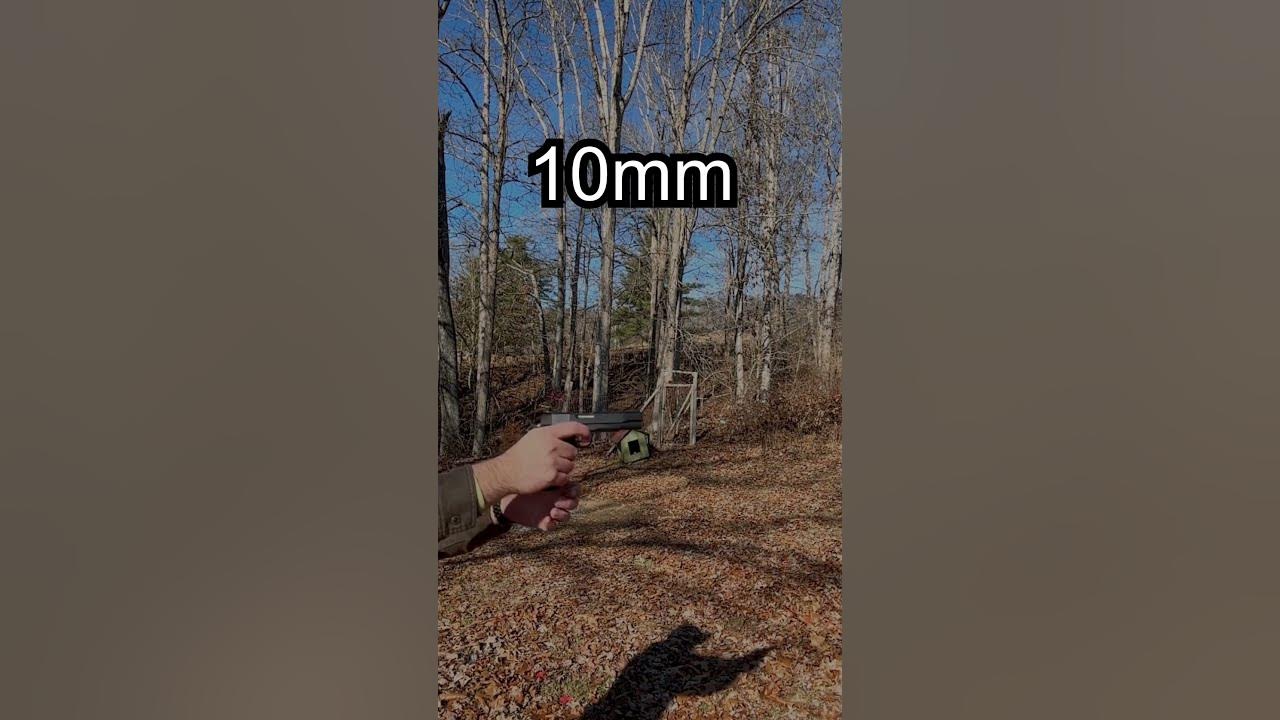
10mm vs .45 ACP: A Comprehensive Ballistics and Performance Comparison
The debate between the 10mm Auto and the .45 ACP is a long-standing one in the firearms community. Both cartridges have their ardent supporters, each championing their preferred round as the superior choice for self-defense, hunting, and even competition. This article aims to provide a comprehensive, objective comparison of the 10mm and the .45 ACP, delving into their ballistics, performance, and practical applications to help you make an informed decision.
A Brief History
Before diving into the specifics, it’s essential to understand the historical context of each cartridge.
The .45 ACP
The .45 ACP (Automatic Colt Pistol) was designed by John Browning in 1904 and adopted by the U.S. military in 1911. It was developed in response to the perceived inadequacy of the .38 Long Colt cartridge used in the Philippine-American War. The .45 ACP quickly gained a reputation for its stopping power, becoming a staple in military and law enforcement circles for decades.
The 10mm Auto
The 10mm Auto is a more recent development, emerging in the early 1980s. It was initially conceived as a more powerful alternative to the 9mm Parabellum, offering flatter trajectory and greater energy. The 10mm gained popularity with the FBI after the 1986 Miami shootout, but its high recoil and cost led to its eventual replacement by the .40 S&W.
Ballistics and Performance
The core of the 10mm vs .45 ACP debate lies in their ballistic performance. Let’s examine several key factors:
Velocity and Energy
Generally, the 10mm Auto boasts higher velocity and energy figures compared to the .45 ACP. A typical 10mm round can achieve velocities of 1,200-1,300 feet per second (fps) with energy levels ranging from 500-700 foot-pounds (ft-lbs). In contrast, a standard .45 ACP round typically travels at 800-900 fps with energy levels around 350-450 ft-lbs. This significant difference gives the 10mm a flatter trajectory and greater potential for penetration, making it suitable for hunting medium-sized game.
Bullet Weight and Diameter
The .45 ACP typically uses heavier bullets, often weighing 230 grains, while the 10mm commonly employs bullets in the 180-200 grain range. The .45 ACP has a larger diameter bullet (.452 inches) than the 10mm (.400 inches). The larger diameter of the .45 ACP is often cited as a factor contributing to its perceived stopping power, as it creates a larger wound channel.
Recoil
Recoil is a crucial consideration for many shooters. The .45 ACP generally produces a more manageable recoil compared to the 10mm. While the .45 ACP recoil is often described as a slower, more of a “push”, the 10mm delivers a sharper, more violent recoil impulse. This difference in recoil can impact accuracy and follow-up shot speed, particularly for less experienced shooters.
Practical Applications
Beyond the raw numbers, the practical applications of the 10mm and .45 ACP are significant factors in determining the best choice for a given scenario.
Self-Defense
Both cartridges are viable options for self-defense. The .45 ACP has a long-standing reputation for its stopping power, and its manageable recoil makes it easier to control in high-stress situations. The 10mm, with its higher velocity and energy, offers greater penetration, which can be advantageous against barriers or multiple attackers. However, its heavier recoil may make it more challenging for some to control effectively. [See also: Best Self-Defense Ammo for Pistols]
Hunting
The 10mm Auto is generally considered a better choice for hunting medium-sized game, such as deer or wild boar. Its higher velocity and energy provide greater penetration and a flatter trajectory, making it more effective at longer ranges. While the .45 ACP can be used for hunting, its lower velocity and energy limit its effective range and target size. Some hunters successfully use the .45 ACP for close-range hog hunting, using specialized, high-penetration ammunition.
Competition
While both cartridges can be used in competition, the .45 ACP is more commonly seen in events like IPSC (International Practical Shooting Confederation) and USPSA (United States Practical Shooting Association). Its manageable recoil and large bullet diameter make it well-suited for these types of shooting sports. The 10mm is sometimes used, but its heavier recoil can be a disadvantage in speed-based competitions.
Firearm Availability and Cost
The availability of firearms chambered in .45 ACP is generally wider than those chambered in 10mm. The .45 ACP has been around for over a century, and many manufacturers offer pistols and rifles in this caliber. While the 10mm has gained popularity in recent years, the selection of firearms is still more limited. Cost is also a factor. Ammunition for the 10mm is typically more expensive than .45 ACP ammunition, due to the higher performance and more specialized nature of the round.
The .40 S&W Compromise
It’s worth mentioning the .40 S&W in the context of the 10mm vs .45 ACP debate. The .40 S&W was developed as a compromise between the 9mm and the 10mm, offering a balance of power and controllability. It uses a .40-inch diameter bullet, similar to the 10mm, but with a shorter case and lower pressure. The .40 S&W has become a popular choice for law enforcement and self-defense, offering a good compromise between power and recoil. [See also: .40 S&W vs 9mm: Which is Best for You?]
Choosing the Right Cartridge
Ultimately, the best choice between the 10mm and .45 ACP depends on your individual needs and preferences. Consider the following factors:
- Intended Use: Are you primarily interested in self-defense, hunting, or competition?
- Shooting Experience: Are you an experienced shooter comfortable with heavier recoil, or are you a beginner looking for a more manageable cartridge?
- Firearm Availability and Cost: What firearms are available in your budget, and how much are you willing to spend on ammunition?
- Personal Preference: Do you prefer the perceived stopping power of a larger diameter bullet, or the flatter trajectory and greater energy of a higher-velocity round?
Conclusion
The 10mm Auto and the .45 ACP are both capable cartridges with distinct strengths and weaknesses. The .45 ACP offers a long-standing reputation for stopping power and manageable recoil, making it a popular choice for self-defense and competition. The 10mm, with its higher velocity and energy, provides greater penetration and a flatter trajectory, making it suitable for hunting and potentially offering an edge in self-defense scenarios where barrier penetration is a concern. By carefully considering your individual needs and preferences, you can choose the cartridge that best suits your needs. The debate of 10mm vs .45 ACP will continue, but understanding the facts allows for an informed decision.

